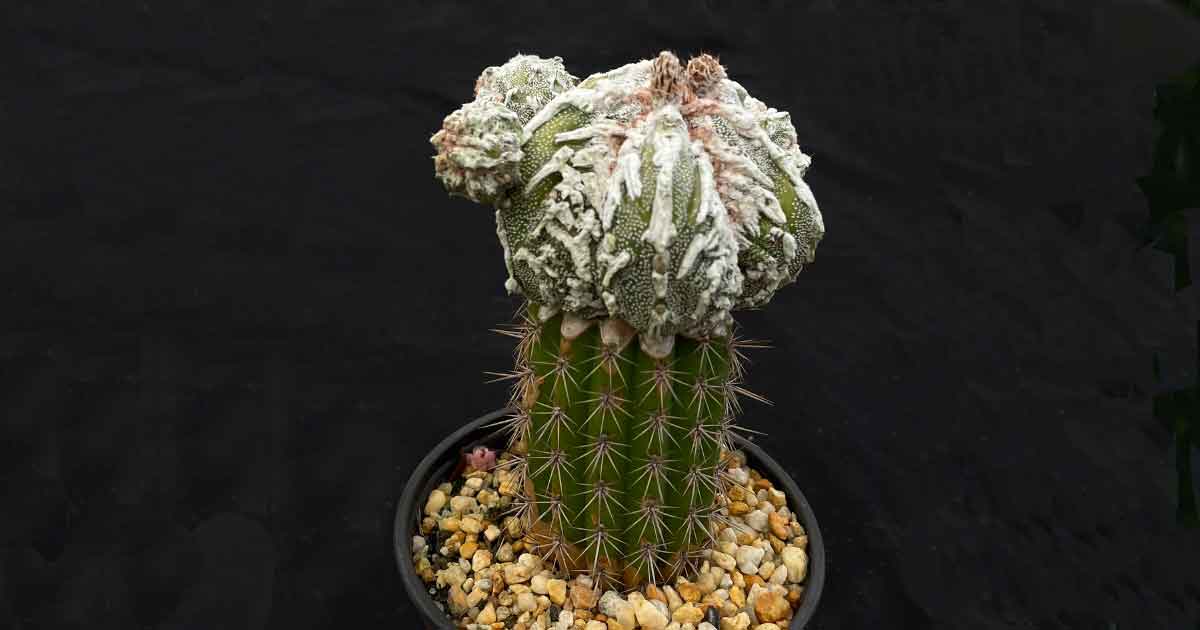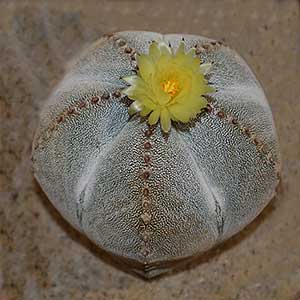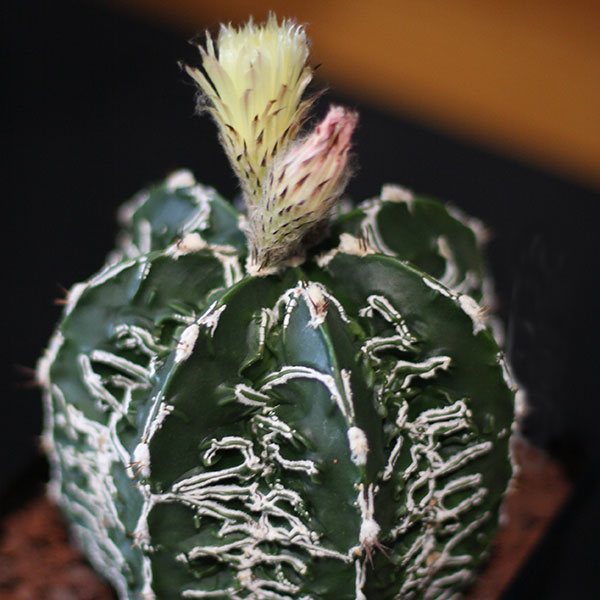The Star Cactus

Astrophytum is a small genus of only six species. They grow in very harsh environments, very hot, poor soils and subject to weather conditions.
Like many succulent varieties will grow in full sun outdoors in the right climate however that are usually grown in containers indoors or protected indoors over winter.
So look for warm to hot conditions, free draining soil and good amounts of light. Low humidity is also important.
Commonly called the Star Cactus because as you look down on them they are appear star shaped. And yes they are grafted onto other cactus.
The six species are :
- Astrophytum asterias
- Astrophytum capricorne
- Astrophytum caput-medusae
- Astrophytum coahuilense
- Astrophytum myriostigma
- Astrophytum ornatum

All are from Mexico with A. asterias also being found in Texas.
However these are a very easy plant to hybridise, so you will will find all sort of Astrophtyums, lots of hybrids from Korea, Japan, Thailand and also in California.
How to Grow Astrophytum
Grow Astrophtyums near a sunny window, summer temperatures of around 70°– 75°F (20° – 24°C) will work well. They can take warmer temperatures if acclimatised slowly and they will tolerate slightly lower temperatures during winter as long as they are kept dry. Try to avoid heavy frosts and no freezes.
- Full sun to every bright light.
- Very well drained soil/potting mix.
- Low to medium humidity in cultivation.
- Never over water.
- Never Cold and wet.
- Hold back on water during succulent dormancy in winter.
- Fertilizer – Very little and low nitrogen.
Astrophytum Care Details
Dormancy is an important aspect of all plant care and Astrophytum are dormant in winter (colder months) and the growing season is from spring through summer (hotter months).
Growing Conditions
Growth rate is naturally slow so optimise growing conditions for best results.
- Light : Good direct sun 6 – 8 hours a day as a minimum. It needs good direct sun to grow well and flower. During very hot summers some afternoon shade may be needed to prevent foliage burn.
- Soil : A free draining specialist cactus and succulent mix. Soil needs to allow free drainage and air to prevent root rot.
- Temperature range : High summer temperatures 70° C (21° C) Plus in summer. Around 60° F 15° C in winter – See Note Below
General Care
- Watering : Dry winters with intermittent watering from spring through summer. Allow the soil to dry between waterings. Once a week from spring through summer as a maximum.
Use distilled water or let tap water sit in a watering can for 3 days before watering.
Avoid water in the foliage as this can increase humidity. - Fertilizer : Use a slow release balanced fertilizer in spring or a balanced NPK liquid fertilizer every 4 weeks through the growing season – Spring through Summer).
- Optimum Temperature ranges
Summer range should be from 20° – 35° C Temperatures lower than 10° C should be avoided. Humidity should be avoided so provide good air flow/ventilation and never overwater.
Potting and Repotting
- Used a pot that is permeable, unglazed terracotta is ideal.
- Never over pot, larger pot sizes can allow access to too much water. Pots that are too small conversely can restrict proper root development.
- Use a potting mix that has been sterilised.
- Most growers repot every 12 – 24 months.
- The time to repot is in early spring.
- Do not water or fertilise for 2 weeks after repotting. This allows any damage or wounds to callus over and helps prevent fungal problems.
Propagation from seeds.
Seeds will germinate in around 7 – 10 days.
Soil For Astrophytum

The correct soil mix for Astrophtytum will not only keep your plant health bit also help it to bloom.
Astrophtytum are prone to fungal attack, so a very free draining mix is needed.
The simplest mix would be a standard cactus and succulent mix with pumice and perlite added. You are looking for a slightly alkaline soil that drains freely
- 4 parts Standard cactus and succulent mix
- 1 part pumice
- 1 part perlite.
A more complicated mix could include
- 6 parts pumice
- 3 parts perlite
- 2 parts akadama
- 3 parts vermiculite
- 1 part peat moss/coco coir
- 1 part kyodama
- 2 parts seed raising mix
Whenever you repot Astrophytums do so into a dry or nearly dry soils. This helps avoid any damaged roots developing rot. Wait 10 – 14 days before watering
Problems
- Root Rot
This is caused by overwatering, poor drainage and cold temperatures. The solution is to repot - Leaves Turning Yellow.
Yellowing is usually caused by overwatering, however lack of direct sun can also be a cause. A combination of lack of sun and overwatering is the worts case scenario. Repotting is usually needed
Insect pests kay be a cause of yellowing however this can be treated with alcohol swabs. - Astrophytum not flowering
Firstly Astrophtytum can take a number of years to flower from seed. 4 – 8 years is not unusual.
Lack of flowers can also be caused by lack of sun, lack of fertilizer and no dormancy period if grown indoors.

